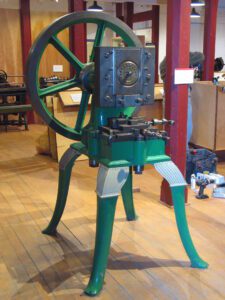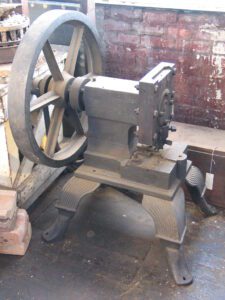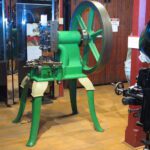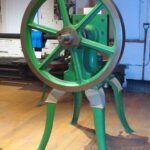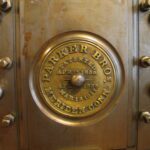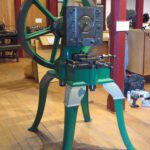Blog
Parker Press, c. 1870
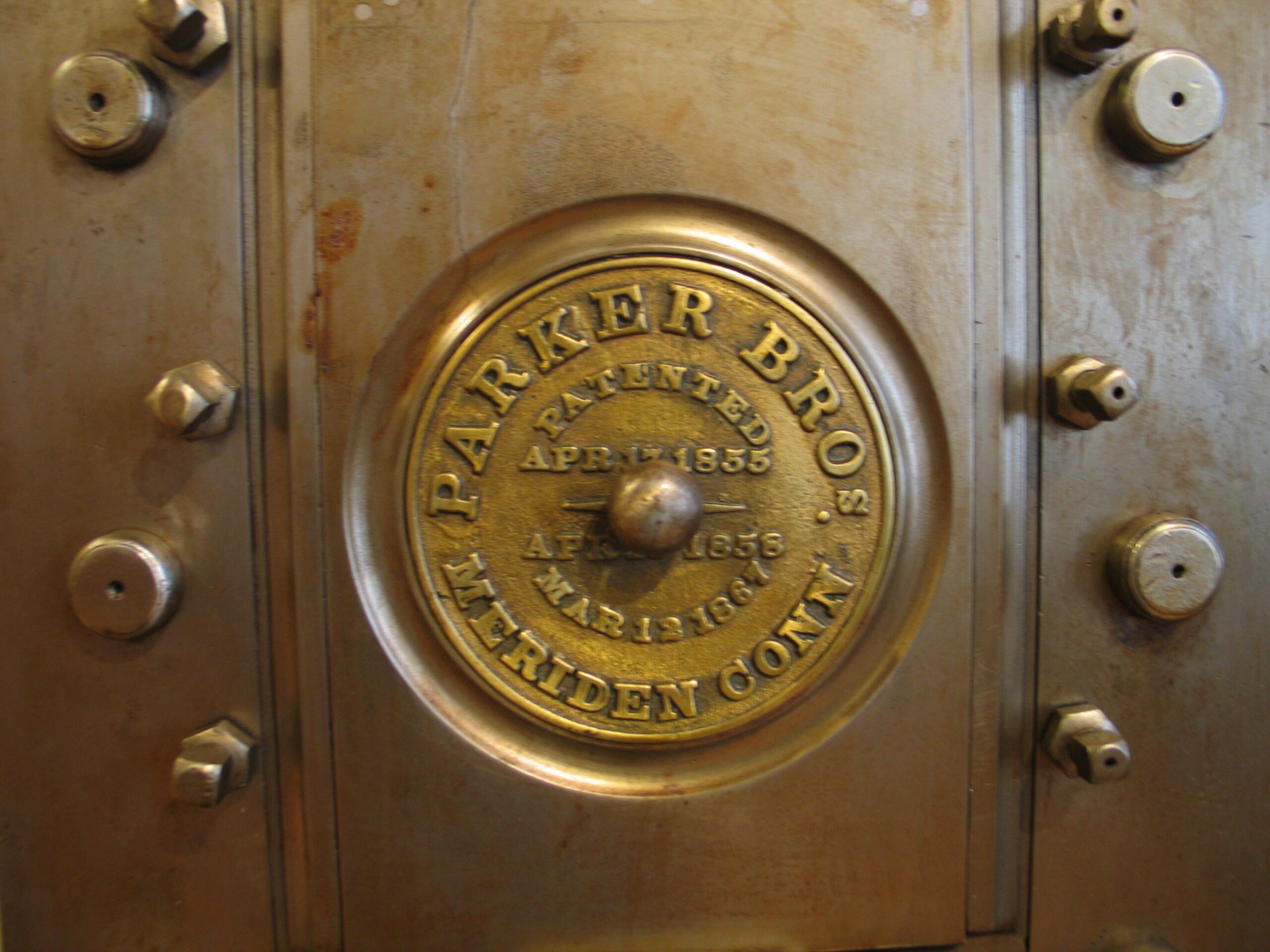
MECHANICAL PRESS, Parker Bros., Meriden Conn, c. 1870
This is one of our most commented-on machines. It looks so good! Our documents don’t tell how it came to have such a beautiful restoration, but we like it.
Charles Parker, 1809 – 1902, pursued business success from his teenage years. In 1832 he started his own plant making coffee mills. They expanded into making all manner of small and medium sized metal things.
In 1844 the company joined with Oliver Snow and became Parker, Snow, Brooks & Company.
We have a smaller press marked only Snow, Brooks & Co. It was probably never as good looking as the Parker Bros. press, but now it has none of its original finish. The decoration in the cast iron of the legs is the same on both presses.
By the time of the Civil War, the company had become the Parker Snow Company. They branched out as the Meriden Manufacturing Company during the war. They made Model of 1861 Springfield rifles and Tripplett and Scott repeating carbines as part of the war effort.
After the war they decided to manufacture shotguns, as rifles were available cheaply as war surplus. This was to be their most famous undertaking. Around 245,000 shotguns were made with the Parker name, and the best of them are considered to be the best of American shotguns.
There may be a mystery here. The articles that we’ve read seem to indicate that the name Parker Brothers & Co. was the name of the division that made the shotguns. Period. So where did the name of our press come in? Would there be a great deal of press work in the making of a double-barreled shotgun around 1870?
““““““““““““““““
Here are some items that make old machines and museums interesting.
- The flywheel, which is 41 inches in diameter, weighs 500 pounds. That rotating weight is converted into a powerful downward stroke by a clutch and crankshaft. It originally had a pedal to trip the clutch.
- To move the machine, we first take the flywheel off using an engine hoist and roll it to some safe place. Then we can move the body of the machine. That part weighs 1200 pounds.
- The two legs on the left of the machine were broken long ago and repaired before the museum got the machine. We take that as a warning when we move it!
“““““““““““““““““““““
Click the pictures to enlarge them, then hit the ‘back’ button to go back to this page.
stay up to date
Want more content from the American Precision Museum?
Sign up to receive news straight to your inbox!
By submitting this form, you are consenting to receive marketing emails from: . You can revoke your consent to receive emails at any time by using the SafeUnsubscribe® link, found at the bottom of every email. Emails are serviced by Constant Contact
